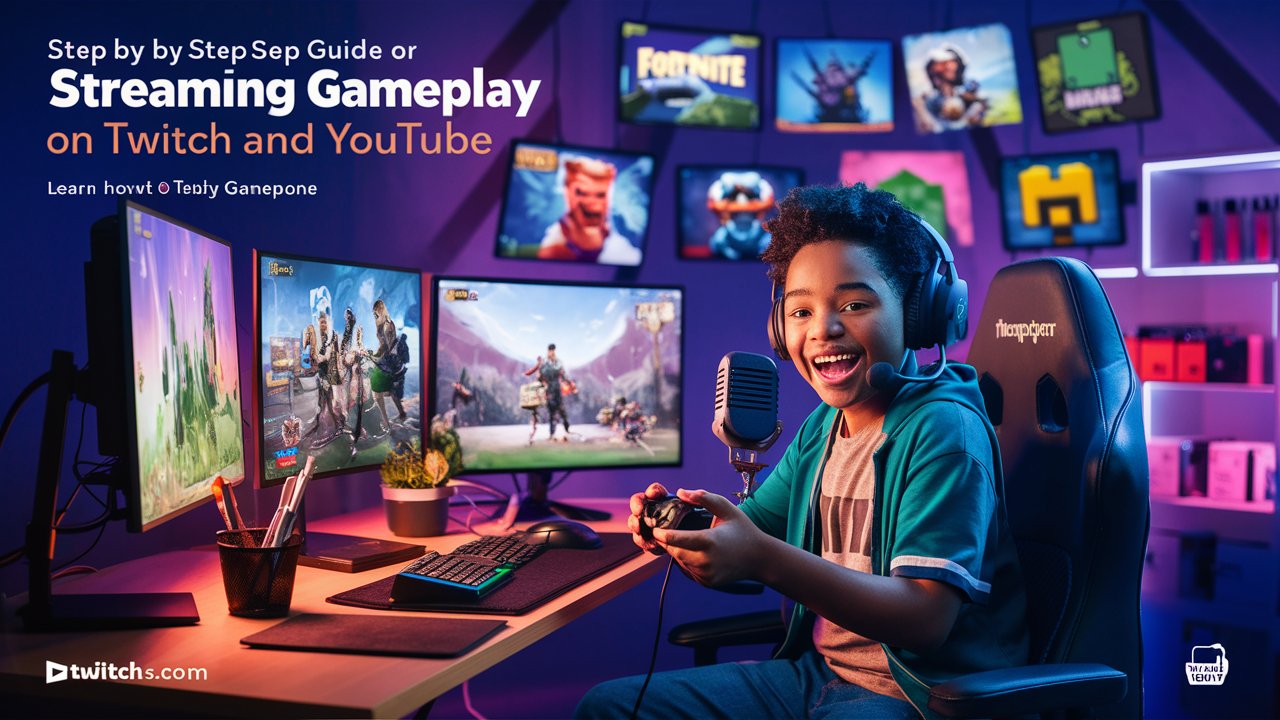Streaming your gameplay on platforms like Twitch and YouTube allows you to share your gaming skills, build a community, and even monetize your content. This guide covers everything you need to start streaming in 2024, from hardware and software setup to optimizing your stream for maximum engagement.
1. Understand Your Purpose and Audience
Before diving in, clarify your goals:
- Why stream? To entertain, educate, or build a following.
- Target audience: Identify their preferences, such as game genres or interaction style.
- Monetization: Platforms like Twitch offer affiliate and partner programs, while YouTube provides ad revenue and memberships.
2. Required Equipment and Setup
A. Hardware Essentials
To stream effectively, ensure your equipment meets these standards:
- Computer: A mid-to-high-end PC with at least:
- Processor: Intel Core i5/i7 or AMD Ryzen 5/7.
- RAM: Minimum 16GB.
- GPU: NVIDIA GeForce RTX 3060 or AMD Radeon RX 6600.
- Peripherals:
- Microphone: USB models like the Blue Yeti are great for clear audio.
- Webcam: Logitech C920 or better for facecam integration.
- Lighting: Softbox lights or ring lights for a professional look.
- Capture Card: Necessary for console streaming, like Elgato HD60S.
- Stable Internet: Minimum upload speed of 6 Mbps. Use a wired Ethernet connection for stability.
B. Streaming Software
Choose a broadcasting tool tailored to your needs:
- OBS Studio: Free and highly customizable.
- Streamlabs OBS: Beginner-friendly with integrated overlays.
- XSplit: Advanced features with a user-friendly interface. For multistreaming (Twitch and YouTube simultaneously), consider platforms like Restream.
| Software | Best For | Cost | Features |
|---|---|---|---|
| OBS Studio | Advanced customization | Free | Live mixing, plugins, and transitions |
| Streamlabs OBS | Beginners | Free/Premium | Integrated alerts, themes |
| XSplit | Professionals | Subscription | Advanced audio/video controls |
3. Setting Up Your Stream
A. Twitch Setup
- Create a Twitch Account: Register and customize your channel.
- Configure OBS/Streamlabs:
- Input your Twitch stream key from the dashboard.
- Customize scenes with overlays and alerts.
- Adjust Settings:
- Resolution: 720p or 1080p for most streams.
- Frame Rate: 30-60 FPS for smooth visuals.
B. YouTube Setup
- Create a YouTube Channel: Enable live streaming in your settings.
- Configure Your Encoder:
- Obtain your stream key from YouTube Studio.
- Set your encoder (e.g., OBS) to match YouTube’s specifications.
- Engage Your Audience: Use interactive features like live chat and polls.
C. Console Streaming
For Xbox and PlayStation:
- Stream directly using built-in Twitch/YouTube integration. For Nintendo Switch:
- Use a capture card to connect the console to your PC.
4. Optimizing Your Stream
A. Graphics and Audio
- Use an intuitive audio mixer to balance game and microphone audio.
- Test your stream before going live to avoid technical issues.
B. Stream Content
- Plan themes for each session (e.g., gameplay walkthroughs or Q&A).
- Maintain consistent streaming schedules to retain viewership.
C. Interaction
- Respond to viewer comments to foster community engagement.
- Use tools like StreamElements for interactive widgets and alerts.
5. Tips for Growth
- Promote your streams on social media platforms.
- Collaborate with other streamers to expand your audience.
- Analyze metrics like average viewership and session duration to refine your strategy.
6. Monetization
- Twitch: Apply for Affiliate/Partner programs to earn via ads, subscriptions, and donations.
- YouTube: Enable ads, memberships, and Super Chats for income.
Conclusion
Streaming gameplay on Twitch and YouTube requires the right combination of hardware, software, and strategy. By understanding your audience, setting up robust equipment, and focusing on interaction, you can create engaging streams that attract viewers and grow your presence. Start your journey today, and remember, consistency and quality are key to success.
